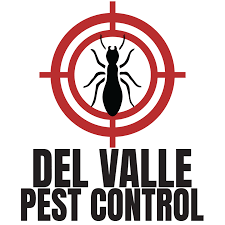
Termites are among the most destructive pests that homeowners can encounter. Often referred to as “silent destroyers,” these pests can cause significant structural damage to homes and buildings before any signs of infestation are visible. With the ability to chew through wood, insulation, and even drywall, termites pose a serious threat to the integrity of a structure. Understanding termite behavior, recognizing signs of infestation, and implementing effective control strategies are essential for protecting your property from these destructive pests.
Understanding Termites
Termites are social insects that live in colonies, typically composed of three main castes: workers, soldiers, and reproductive individuals (kings and queens). The most common types of termites in the United States are:
- Subterranean Termites: These termites live underground and are the most destructive type. They build mud tubes to travel between their nests and food sources, which are usually wooden structures.
- Drywood Termites: Unlike subterranean termites, drywood termites live inside the wood they consume and do not require contact with the soil. They can infest a structure without any visible signs until significant damage occurs.
- Dampwood Termites: These termites prefer moist wood and are commonly found in decaying or water-damaged timber. They are less common but can still cause damage in areas with high humidity or poor drainage.
Signs of Termite Infestation
Detecting termites early is crucial for minimizing damage. Here are common signs to look out for:
- Mud Tubes: Subterranean termites build mud tubes to protect themselves while traveling between their nests and food sources. These tubes are typically found along foundation walls, in crawl spaces, or on wooden beams.
- Wood Damage: Termite-damaged wood may sound hollow when tapped. Look for wood that is brittle, crumbling, or has visible tunnel patterns. Check for frass (termite droppings), which resembles sawdust and can be found near infested wood.
- Swarmers: During mating season, reproductive termites, known as swarmers, leave their colonies in search of new nesting sites. If you see discarded wings or swarms of small, dark insects indoors, it may indicate an active infestation.
- Paint or Wallpaper Damage: Bubbling or peeling paint and wallpaper can be a sign of termite damage underneath. If the surface feels soft or spongy, it may be a warning sign of infestation.
- Presence of Termite Droppings: Termite droppings can look like small pellets and are often found near areas where termites are active.
The Importance of Termite Control
Termite infestations can lead to costly repairs. According to the National Pest Management Association, homeowners can spend thousands of dollars on termite damage and treatment. Implementing effective termite control measures is essential to safeguard your property and finances.
Additionally, termites can compromise the safety of your home, leading to potential structural failures that pose risks to occupants. Regular inspections and prompt treatment can help minimize the risk of severe infestations and damage.
Effective Termite Control Strategies
Controlling and preventing termite infestations involves a combination of monitoring, treatment, and ongoing maintenance. Here are some effective strategies for termite control:
1. Regular Inspections
Conducting routine inspections is key to catching infestations early. Homeowners should inspect their property at least once a year for signs of termites. Pay special attention to areas where wood meets soil, crawl spaces, basements, and any wood in contact with moisture.
Engaging a professional pest control service for annual inspections can provide an expert assessment of your property. Professionals can identify potential problem areas and provide treatment recommendations.
2. Moisture Control
Termites are attracted to moisture, so managing humidity levels and moisture sources is crucial in preventing infestations. Here are some tips:
- Fix Leaks: Repair any plumbing leaks or water damage promptly to minimize moisture buildup.
- Improve Drainage: Ensure proper drainage around your home’s foundation to prevent water accumulation. Use gutters and downspouts to direct water away from the foundation.
- Ventilation: Ensure adequate ventilation in attics, basements, and crawl spaces to reduce humidity and moisture levels.
3. Physical Barriers
Physical barriers can deter termites from entering your home:
- Foundation Barriers: Installing metal mesh or sand barriers during construction can help prevent termites from accessing wooden structures.
- Concrete and Steel: Using concrete or steel supports in building construction can provide additional protection against termite damage.
4. Chemical Treatments
Chemical treatments are a common approach for controlling and preventing termite infestations. There are two main types of chemical treatments:
- Liquid Soil Treatments: These treatments create a barrier in the soil around your home. They are applied to the soil during construction or around the foundation of existing homes. Liquid treatments can help kill or repel termites that come into contact with the treated soil.
- Bait Systems: Bait systems consist of small stations placed around the property that contain bait toxic to termites. When termites consume the bait, they share it with the colony, effectively eliminating it. Bait systems are an environmentally friendly alternative to traditional chemical treatments and can provide ongoing protection.
5. Professional Pest Control Services
If you suspect a termite infestation or want to take proactive measures, consider hiring a professional pest control service. Pest control experts have access to advanced tools, techniques, and products that can effectively eliminate termites. They can also provide ongoing monitoring and maintenance to ensure your home remains protected.
Conclusion
Termite control is essential for protecting your home from these destructive pests. Understanding termite behavior, recognizing the signs of infestation, and implementing effective control strategies can help safeguard your property and finances. Regular inspections, moisture control, physical barriers, chemical treatments, and professional pest control services are key components of a comprehensive termite management plan.
By taking proactive steps to prevent and manage termite infestations, homeowners can enjoy peace of mind, knowing their homes are protected from the threats posed by these silent destroyers.